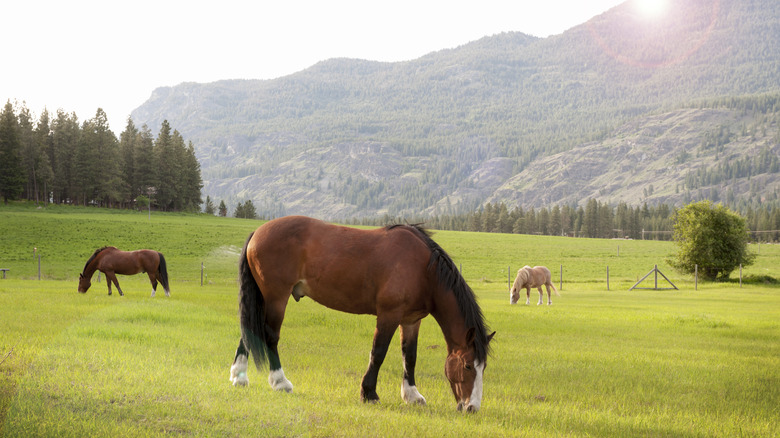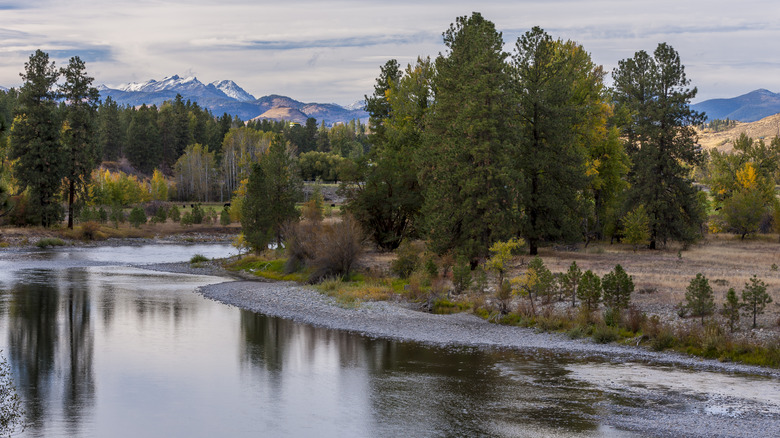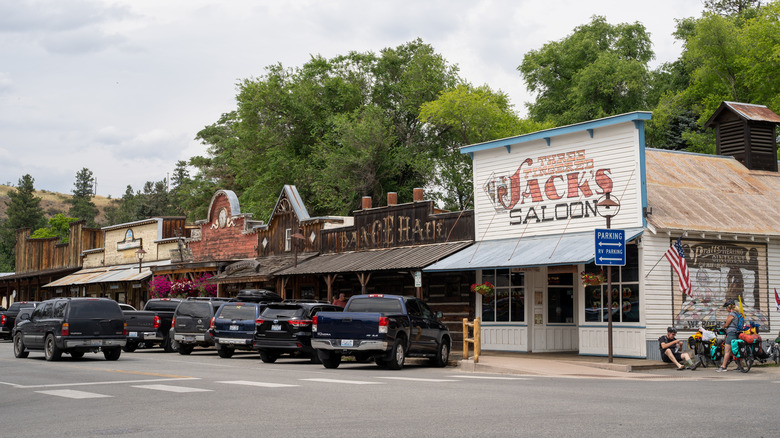Washington's Largest County Is One Of Its Most Sparsely Populated With Scenic Views And Off-The-Grid Charm
In the state of Washington, Seattle may carry the title of America's most "outdoor-friendly" city, but even its mountain views and scenic Puget Sound shoreline can't rival the vastness of Okanogan County. Covering just under 5,300 square miles along Washington's northern border with Canada, it's the state's largest county by land area, yet is one of its least populated. Fewer than 45,000 residents are scattered across its high-desert plateaus, pine-draped valleys, and canyons.
Long before its modern-day borders were established, this land was home to the Okanogan and other Colville tribes, who relied on the Columbia River's salmon runs and the mountain valleys' hunting grounds for their way of life. European settlers arrived in the 1800s, first lured by fur trading and then by gold. Visitors can explore the area's history at the Okanogan County Historical Museum, which features a replica of an Old West town from the early 20th century. The county's name itself preserves its Indigenous roots, drawn from a word often translated as "rendezvous" or "meeting place."
The county's remoteness shows in the trip it takes to get there. From Seattle, the drive takes between 4 and 5 hours, depending on your route. Visitors can take the road through Stevens Pass or go via Wenatchee, following U.S. Route 97. Pangborn Memorial Airport in Wenatchee (about 2 hours away) provides regional flights, while Spokane International Airport and Seattle-Tacoma International Airport serve as larger gateways.
Okanogan's outdoor adventure and off-grid living
The county's size makes it a natural playground for outdoor travelers. The Methow Valley is one of its best-known corners, framed by rivers and wide meadows. In summer, you can hike along valley trails or saddle up for horseback rides that take you into the backcountry. Winter turns the same area into one of the largest cross-country ski trail networks in the U.S., featuring more than 120 miles of trails.
Beyond the valley, Okanogan-Wenatchee National Forest covers millions of acres, with elevations climbing from dry steppe hills to jagged peaks. Campsites here are $22 per night, and trails lead to alpine lakes where you can spend an afternoon fishing or picnicking. The Okanogan River itself offers a different way to explore: Calm stretches are well-suited for kayaking or tubing, while tributaries draw anglers for trout and salmon. Driving through Okanogan County can be just as memorable as exploring it on foot. State Route 20, the North Cascades Scenic Highway, is a highlight, threading through some of the Pacific Northwest's most striking mountains, lakes, and island views.
And if you're looking for an off-grid lifestyle, you can't do much better than the isolated natural beauty of Okanogan. In a 2024 nationwide survey of 3,000 participants, Business Electric ranked it 70th among the top 150 most desirable counties for off-grid living.
Art, and history, and tradition in Okanogan County
Across Okanogan County's vast expanse, several small towns hold on to their distinct individuality. Winthrop is perhaps the most recognizable, having transformed in the 1970s when locals restored its downtown into an Old West-style setting to attract visitors. The town's boardwalks and saloon-style facades hide far more modern comforts. The River's Edge Resort offers cozy cabins right on the Methow River, with cabins starting around $200 per night. It's an ideal base for exploring trails or simply strolling around town.
Head down the valley and the mood shifts. Twisp has grown into a vibrant mountain town offering riverfront trails and charming markets that capture the valley's agricultural character. The local farmers market offers fresh produce, artisan crafts, music, and fun activities. You can browse it on Saturdays from 9 a.m. until noon. Twispworks, a repurposed ranger station with the U.S. Forest Service, anchors the creative community with studios, galleries, and seasonal events, while the Methow Valley Theater adds cultural variety to the area.
Then there's Omak, the county's largest town. It is known for the Omak Stampede, one of the Pacific Northwest's signature rodeos held every August. Events include bull riding, barrel racing, and the famous Suicide Race, where riders plunge horses down a steep hill into the Okanogan River. The town also serves as a hub for travelers. The Omak Inn, with nightly rates around $140, offers access to both horse-riding facilities and the surrounding countryside.


